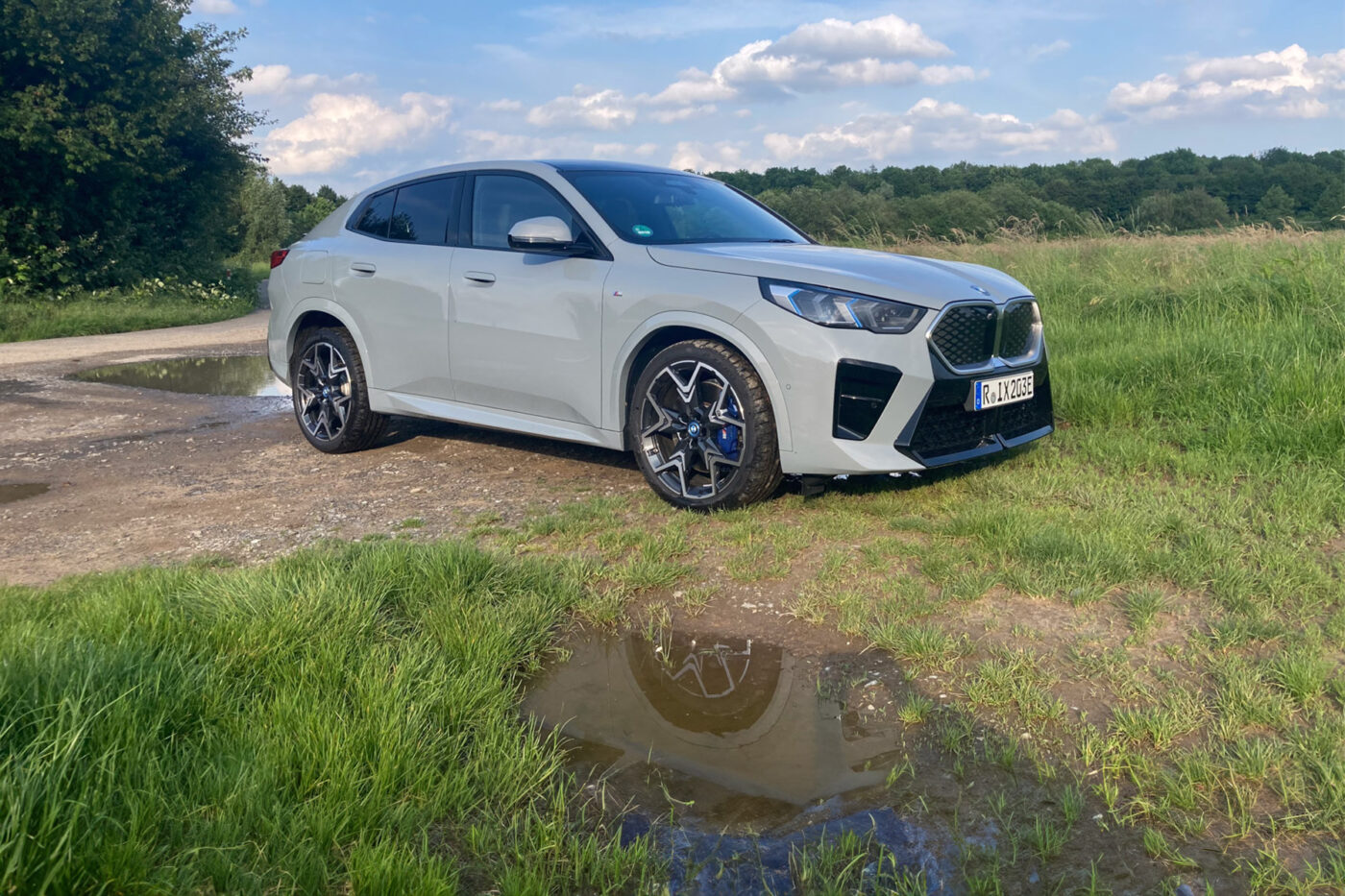
BMW iX2 test proves sporty and comfortable with a manageable range
There is no question that BMW’s rather conservative electric strategy is currently paying off. Among German premium manufacturers, the Munich-based company is currently the most successful with its electric cars, even if – with the exception of the iX – they are ‘only’ electric versions of combustion engine models. That is not necessarily a bad thing per se, as the market success shows. Because BMW customers like it. With the upcoming ‘Neue Klasse’ vehicles, BMW will then also rely on a purely electric platform. In the here and now, however, the multi-energy approach is ensuring sales success.
The iX2 also contributes to this, as the second generation of the compact SUV coupé is available as an all-electric model. BMW has always positioned the X2 not only as a coupé offshoot of the X1, but as an independent, more extravagant model. Although the ‘Brooklyn Grey metallic’ paintwork of our test car was rather inconspicuous, it did not do much to conceal the strikingly designed elements at the front and rear compared to the iX1.
We tested the iX2 xDrive30, the all-wheel drive version with 230 kW of power and a 65 kWh (net) battery. The WLTP range is up to 449 kilometres – the 150 kW front-wheel drive iX2 eDrive20 doesn’t get much further at 471 kilometres.
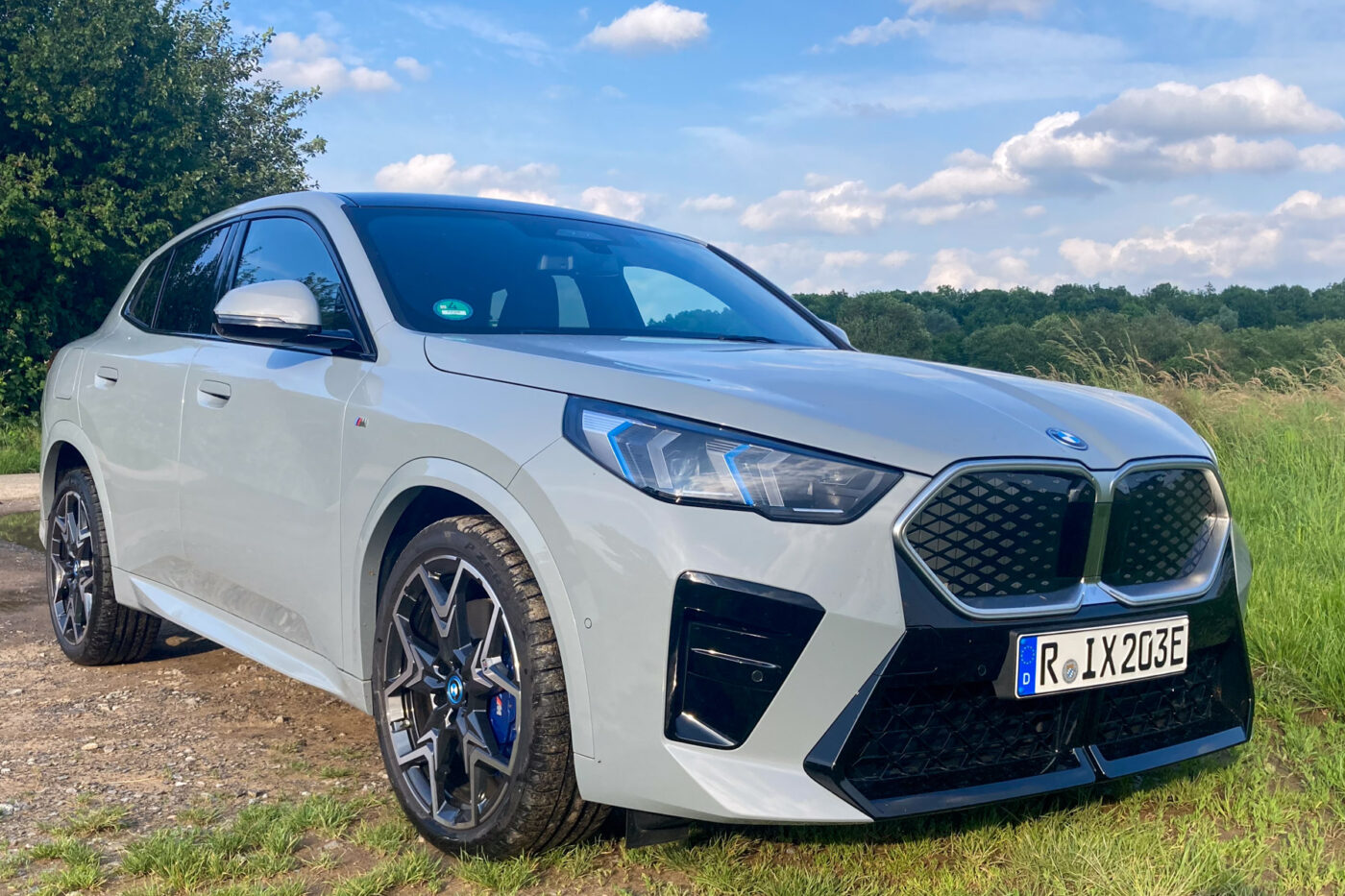
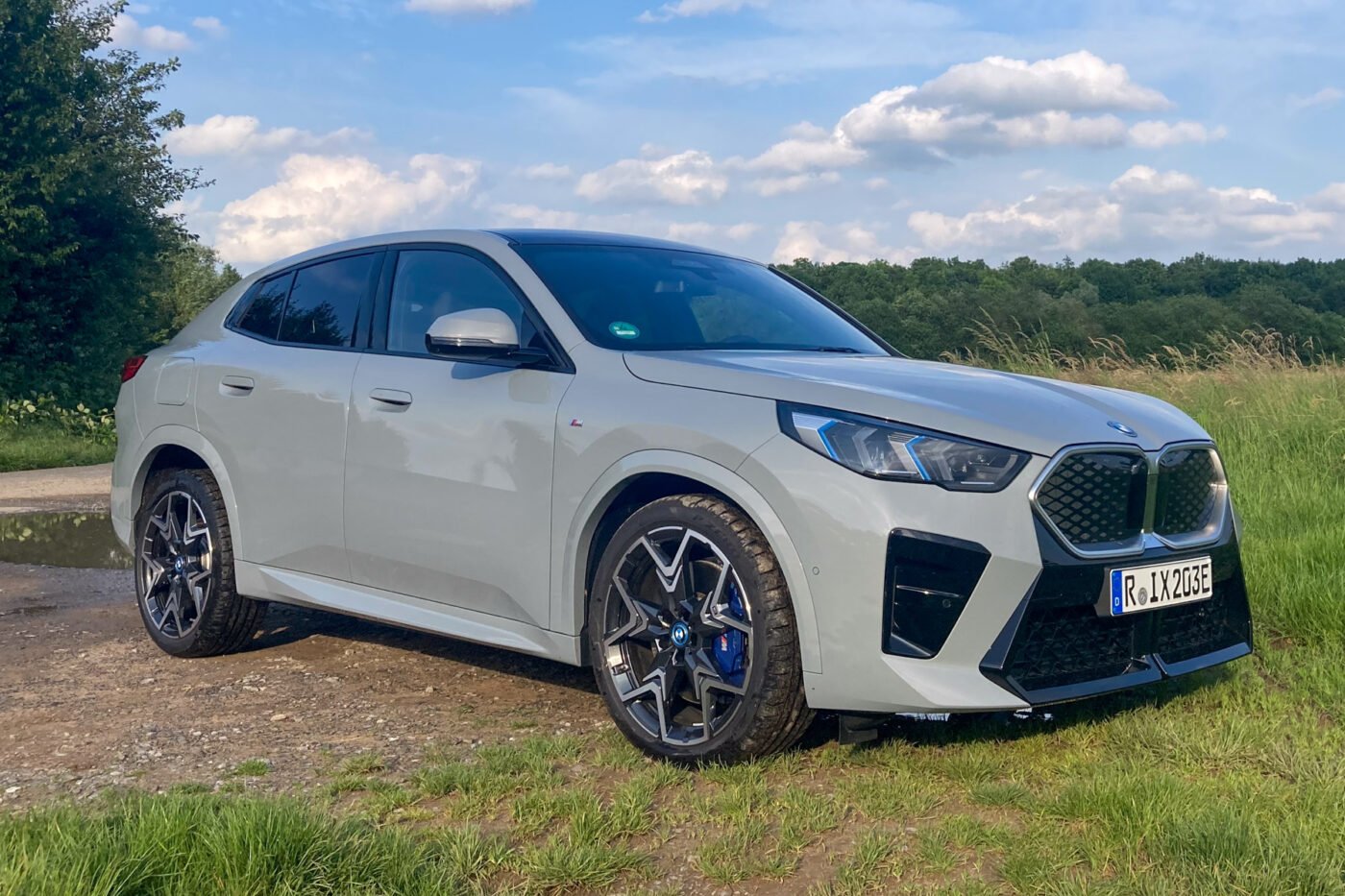
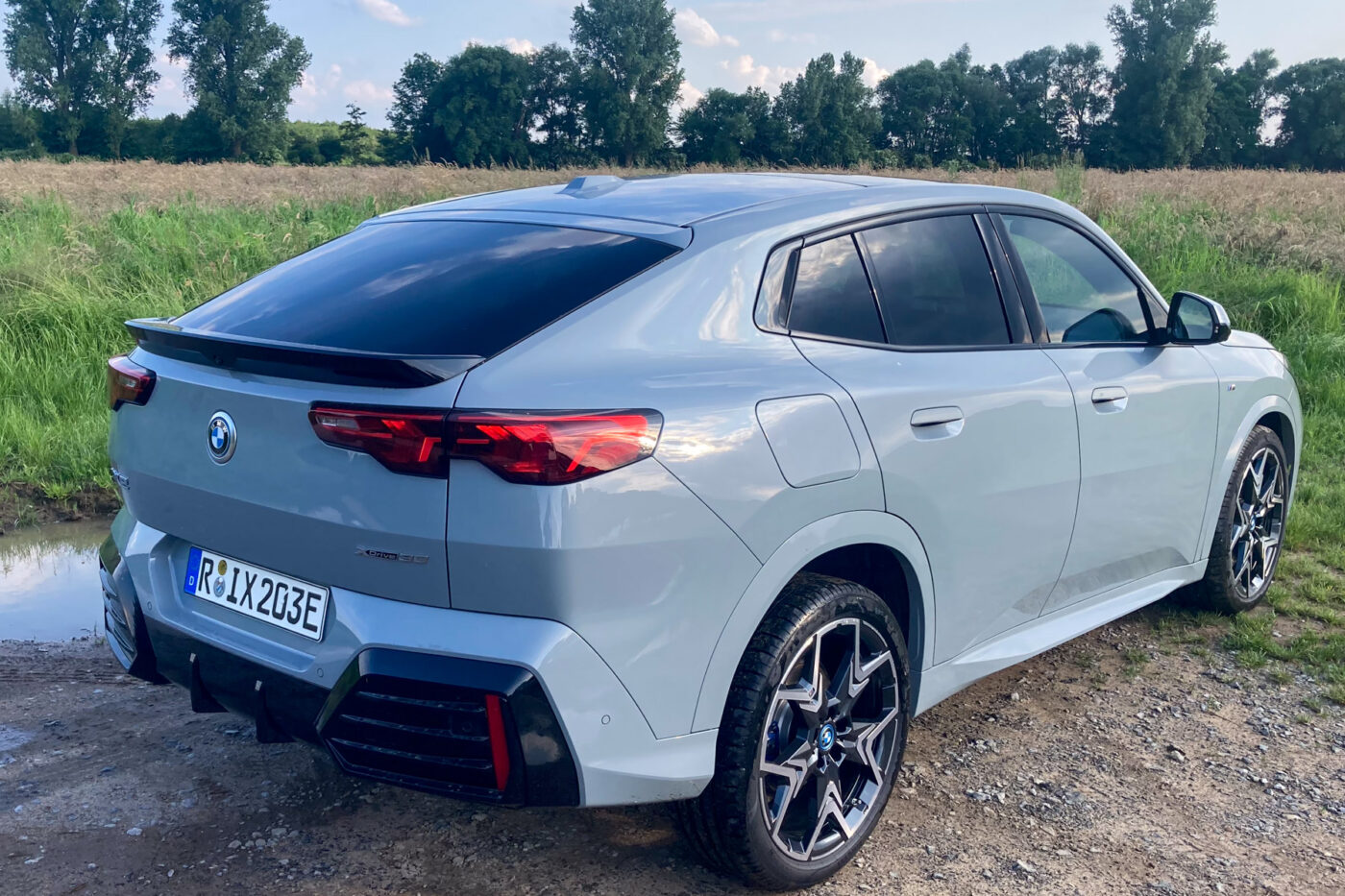
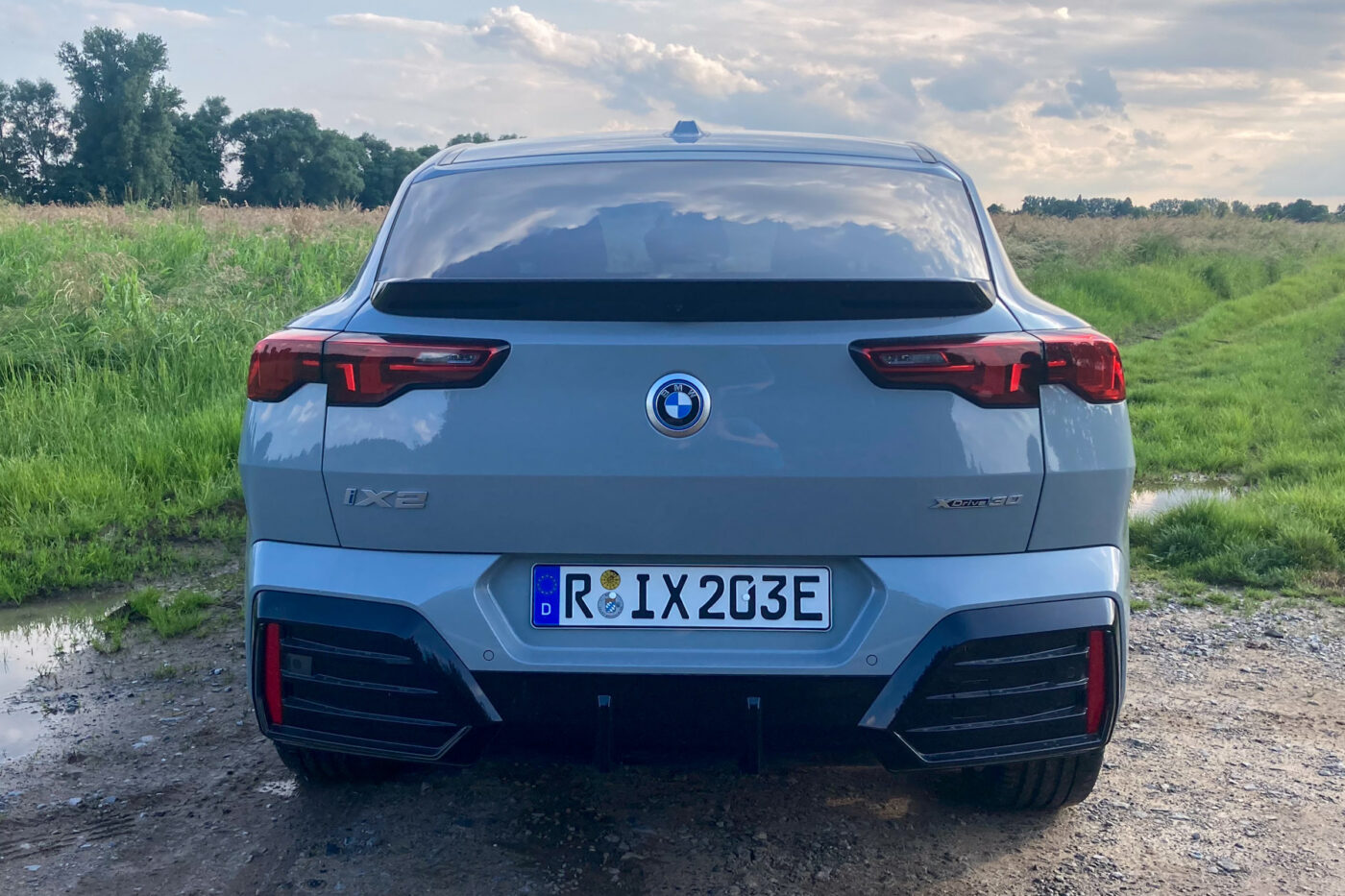

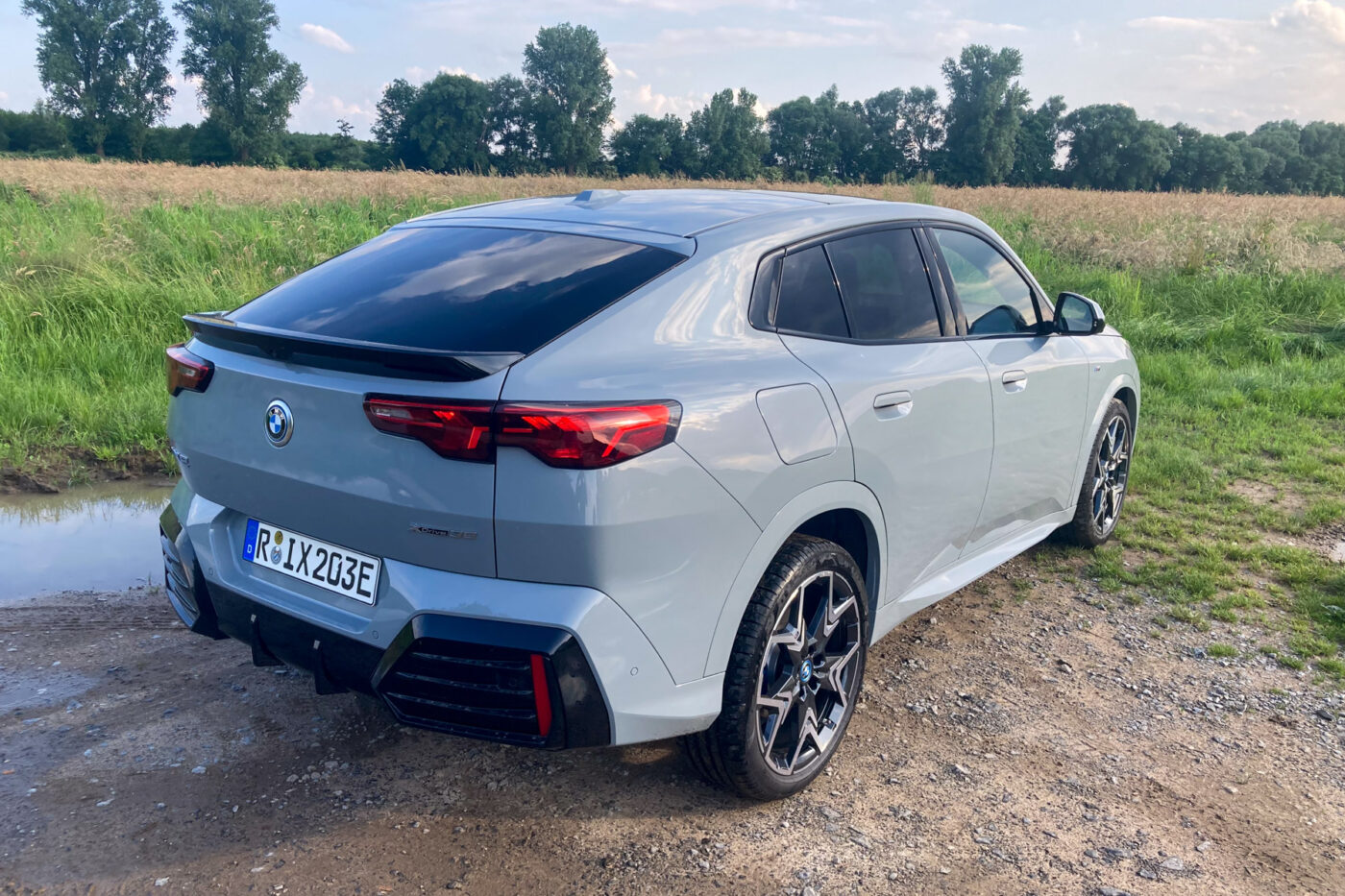

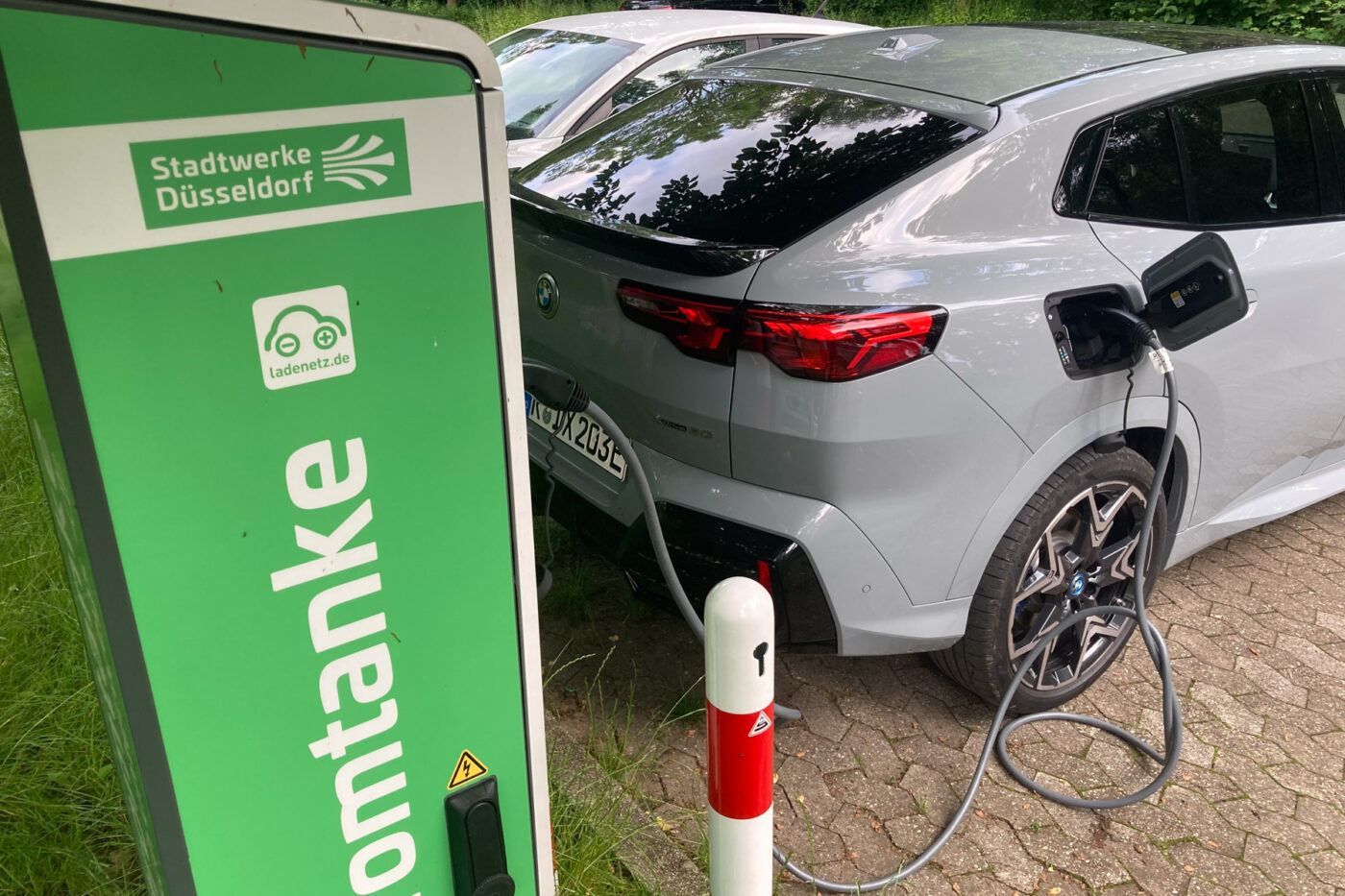
Competitor models such as the Tesla Model Y with the long-range battery, the MEB SUV coupés from the VW Group of Volkswagen, Skoda, Audi and Cupra (from rather plain to extravagant) or the Volvo EC40 are available with batteries of around 75 to 80 kWh. Mercedes has also increased the net capacity of its EQA 350 4MATIC from 66.5 to 70.5 kWh. We are all familiar with the debate about daily journeys and what range would actually be sufficient. Nevertheless, the debate is appropriate for a vehicle with a real range of 300 kilometres: on the one hand, people without their own wall box charging stations who rely on public charging stations are happy with every extra kilometre of range, even on short journeys. And when it comes to long journeys, the differences become apparent. Anyone buying a BMW for just under 75,000 euros shouldn’t feel like they’re compromising.
What’s more, the iX2 is not the fastest when it comes to stops at the fast charger. With a peak of 127 kW, we almost reached the factory specification of 130 kW. But even that level is not maintained for long; from around 20 per cent charge level, the power drops slowly but steadily: at 43 per cent it is less than 100 kW, at 60 per cent it is still 75 kW. We needed 32 minutes for a standard charging process from ten to 80 per cent. At least the charging time can be achieved repeatedly; the battery can be preconditioned manually or automatically.
To compare, VW’s 77/79 kWh battery has a peak output of 175 kW and a charging time of 26 minutes. Not to mention the Tesla Model Y with the 60 kWh BYD battery and a charging time of 20 minutes. As with the range, the iX2 is not bad and is more than sufficient for everyday use. But the competition is simply further ahead.
When it comes to AC charging, however, BMW is (optionally) one step ahead of many of its competitors. You can order a 22 kW onboard charger from the Munich-based company for an extra charge. It is called ‘AC Charging Professional’ in the surcharge list and costs 720 euros. The option is potentially interesting for professional users and private customers. Because with 22 kW charging power, the battery can be fully charged in just around three hours at public AC stations. With some charging tariffs, a ‘blocking fee’ applies after four hours of AC charging. And if you have to charge a 77 kWh battery with the standard 11 kW, for example, you won’t get the battery fully charged in four hours. So, if you regularly charge your electric car at a public AC charging point, you can consider this option with BMW. On the other hand, anyone who is already connected to the wall box charger at home overnight or can charge at work for several hours during the day does not need to invest the 720 euros.
There are clear compromises in terms of range and fast charging, even if this is not a major issue for all customers (keywords: a lot of short journeys and own wall box charging station) – but for others, it can be a deal-breaker. In our opinion, the iX2 sets the benchmark in the segment in another area: the chassis.
Our test car was equipped with the optional M sports package for 3,950 euros. The adaptive M suspension is extremely well-tuned. The iX2 is sporty and agile without being nervous. At the same time, the ride comfort is just right in everyday driving and on long journeys; the springs and dampers are neither too hard nor too soft. All in all, a very successful chassis. In combination with the powerful but easy-to-control drive, it is a well-rounded overall package that suits a variety of riding styles.
Many, but not all, assistance systems make a similarly sophisticated impression. As with the i7 and i4, systems such as signpost recognition also worked excellently in the iX2. Additional signs for time or weather-related restrictions were also clearly recognised – the iX2 was one of the few test cars in the recent past to stand out positively in this respect. Nevertheless, there is still room for improvement. If the iX2 automatically adopts a recognised speed limit when cruise control is active, it sometimes changes speed very abruptly. However, the lane departure warning system, which sometimes still beeped even though the direction of travel had long since been corrected, was a negative feature.
If you like the independent look of the iX2 better than that of the iX1, the flatter roofline does not necessarily mean less practicality. For a 4.55 metre-long car, the iX2 has a surprisingly large boot. On paper, it has 525 litres according to the VDA standard, which is enough for larger purchases or luggage. One small restriction in everyday use: the loading sill is slightly higher and the iX2 does not have the now standard flat loading – a crate of drinks, for example, has to be lifted over the loading sill and then lowered a few centimetres back into the boot. This used to be normal, but nowadays a flat loading sill has become the norm. If you need more space: With the rear seat backrests folded down, 1,400 litres fit into the iX2 – or you can use the optional trailer coupling with a braked towing capacity of 1,200 kilograms.
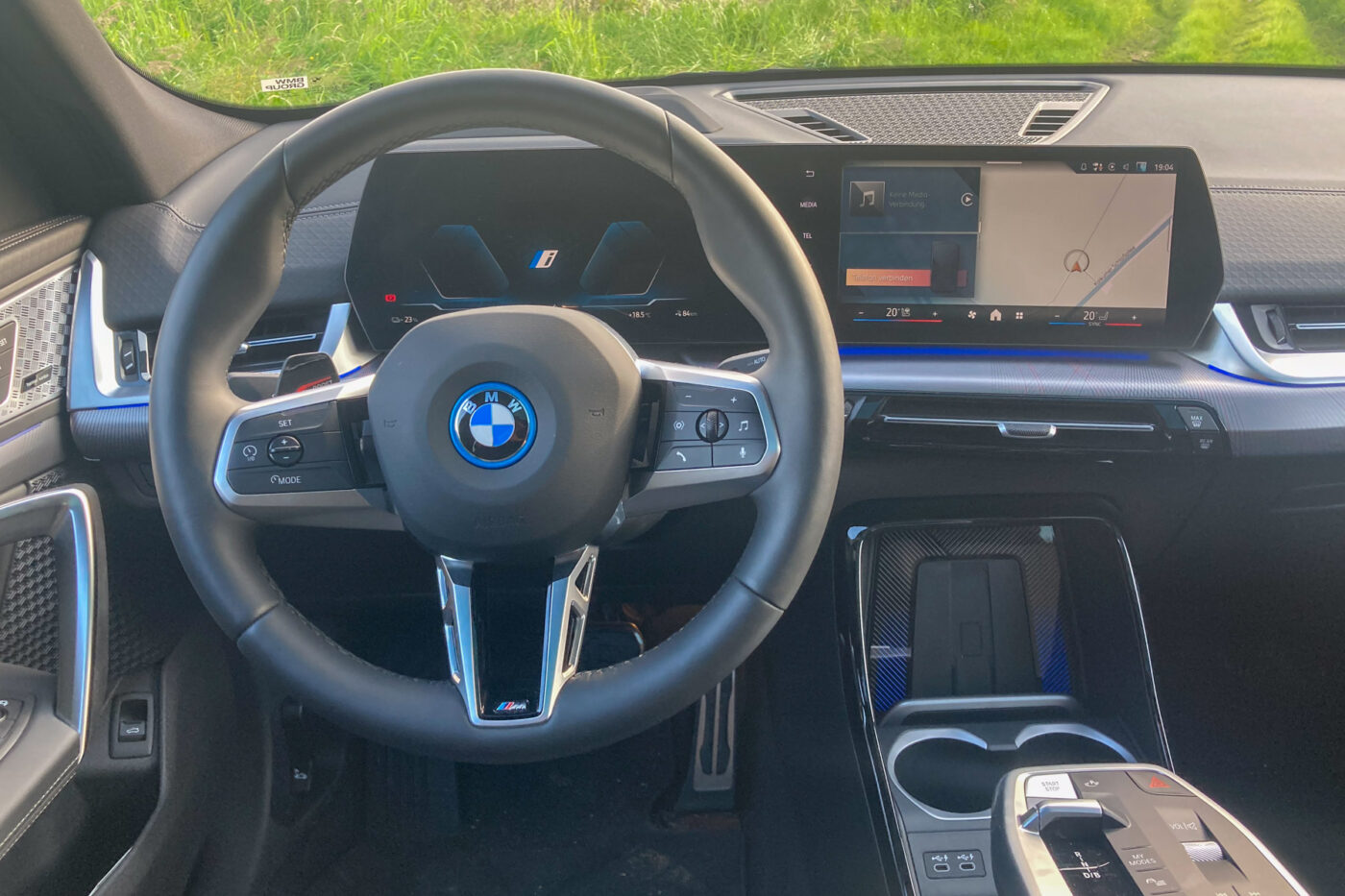

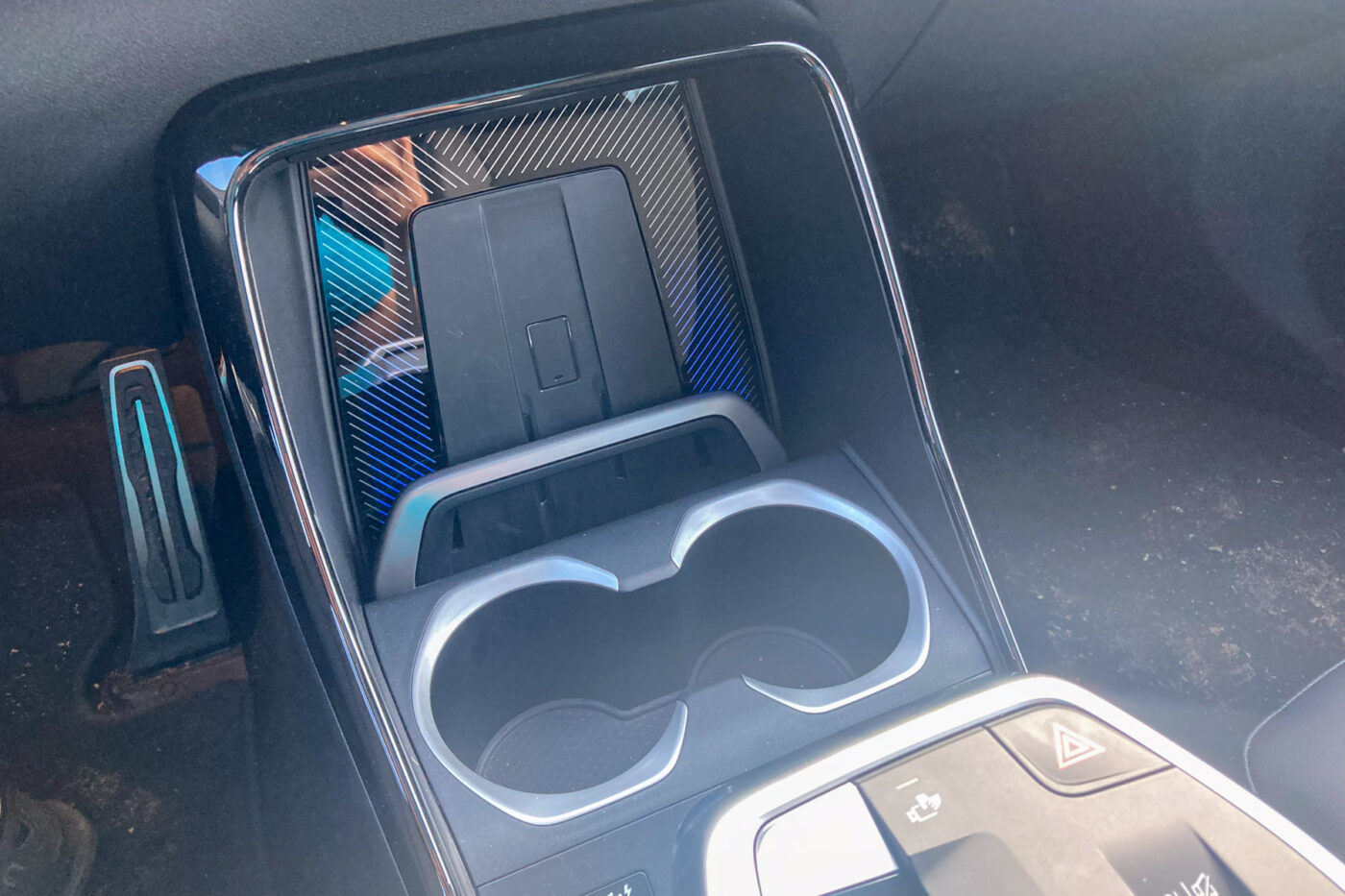
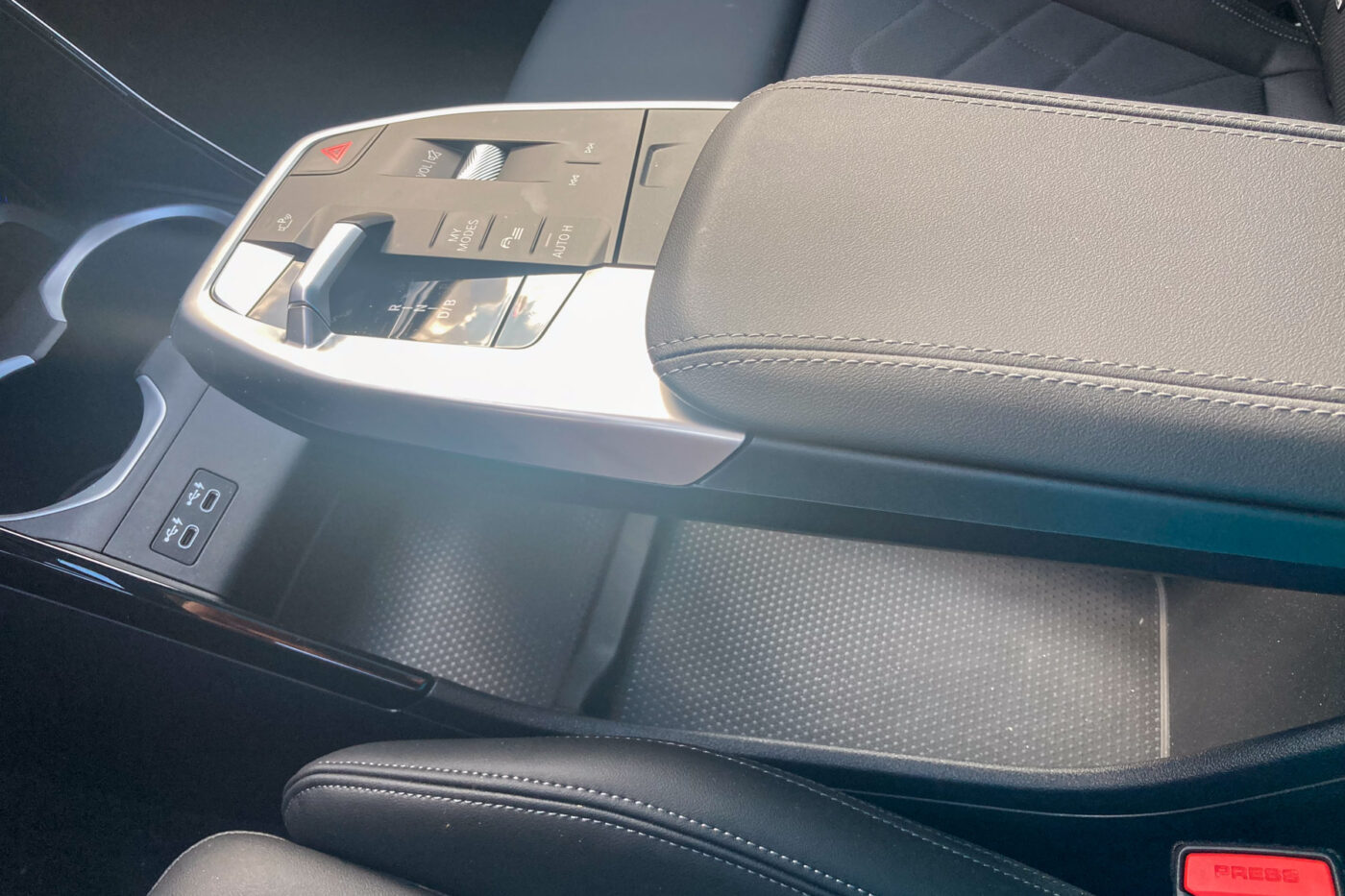
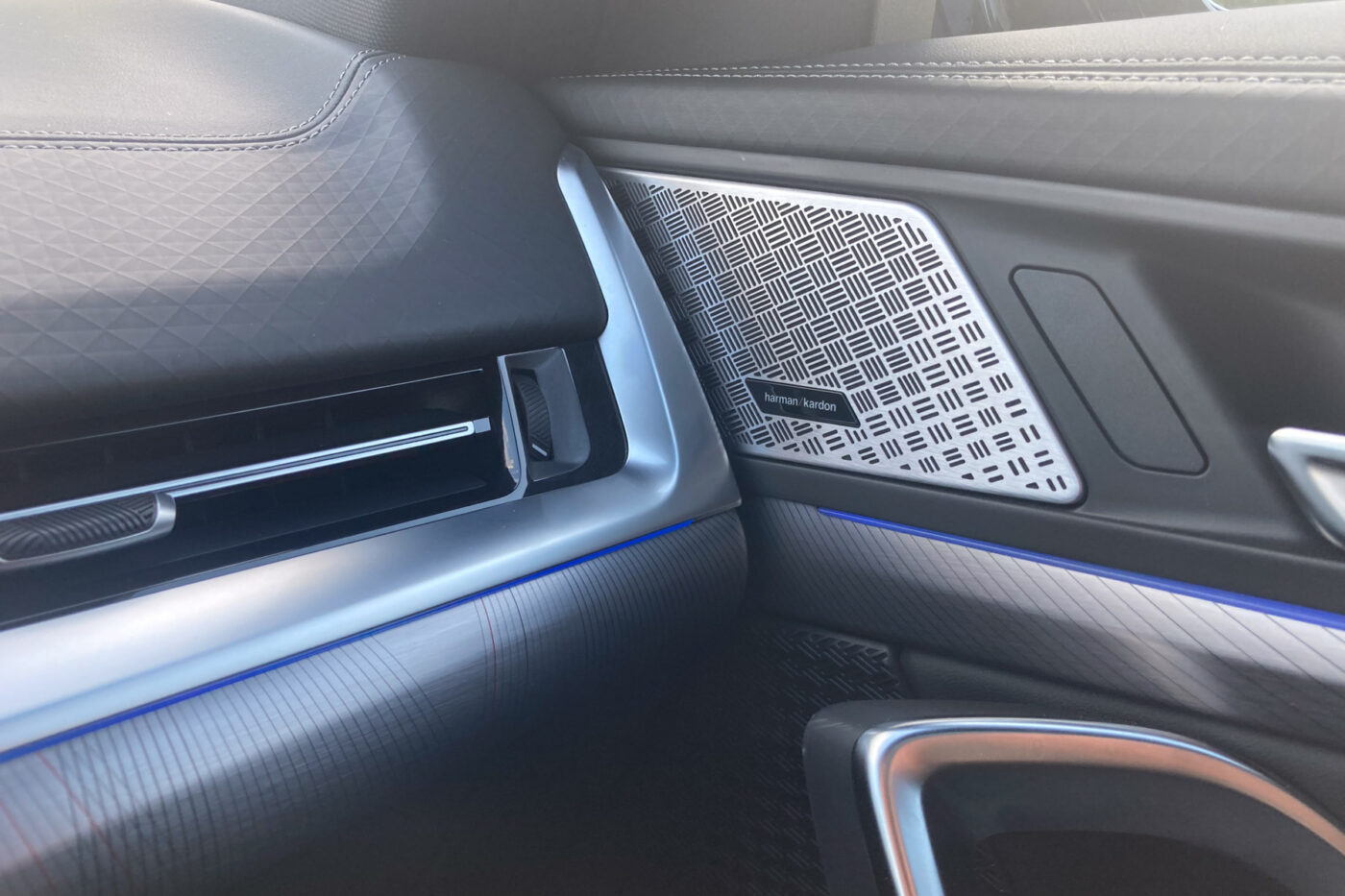
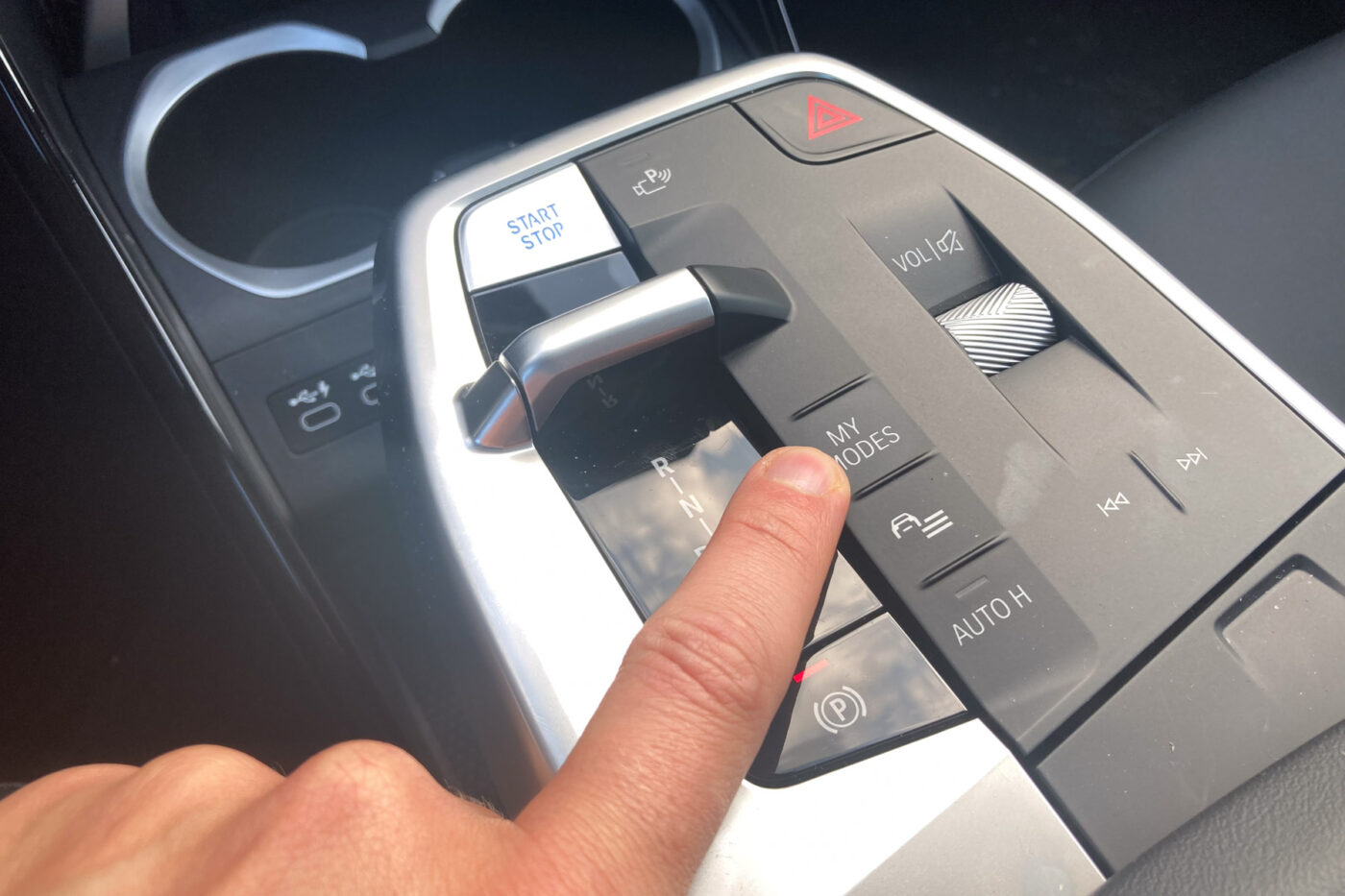
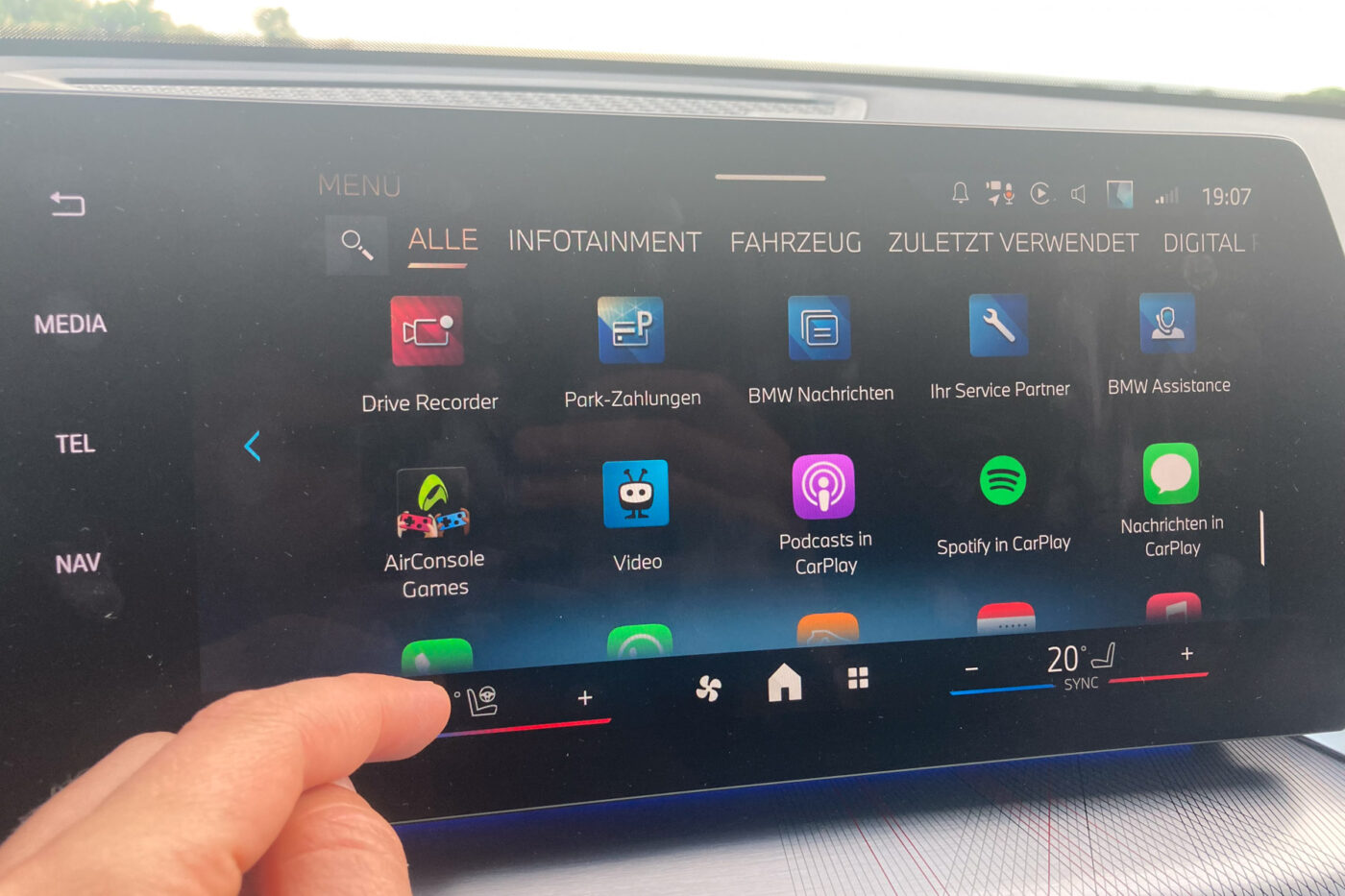
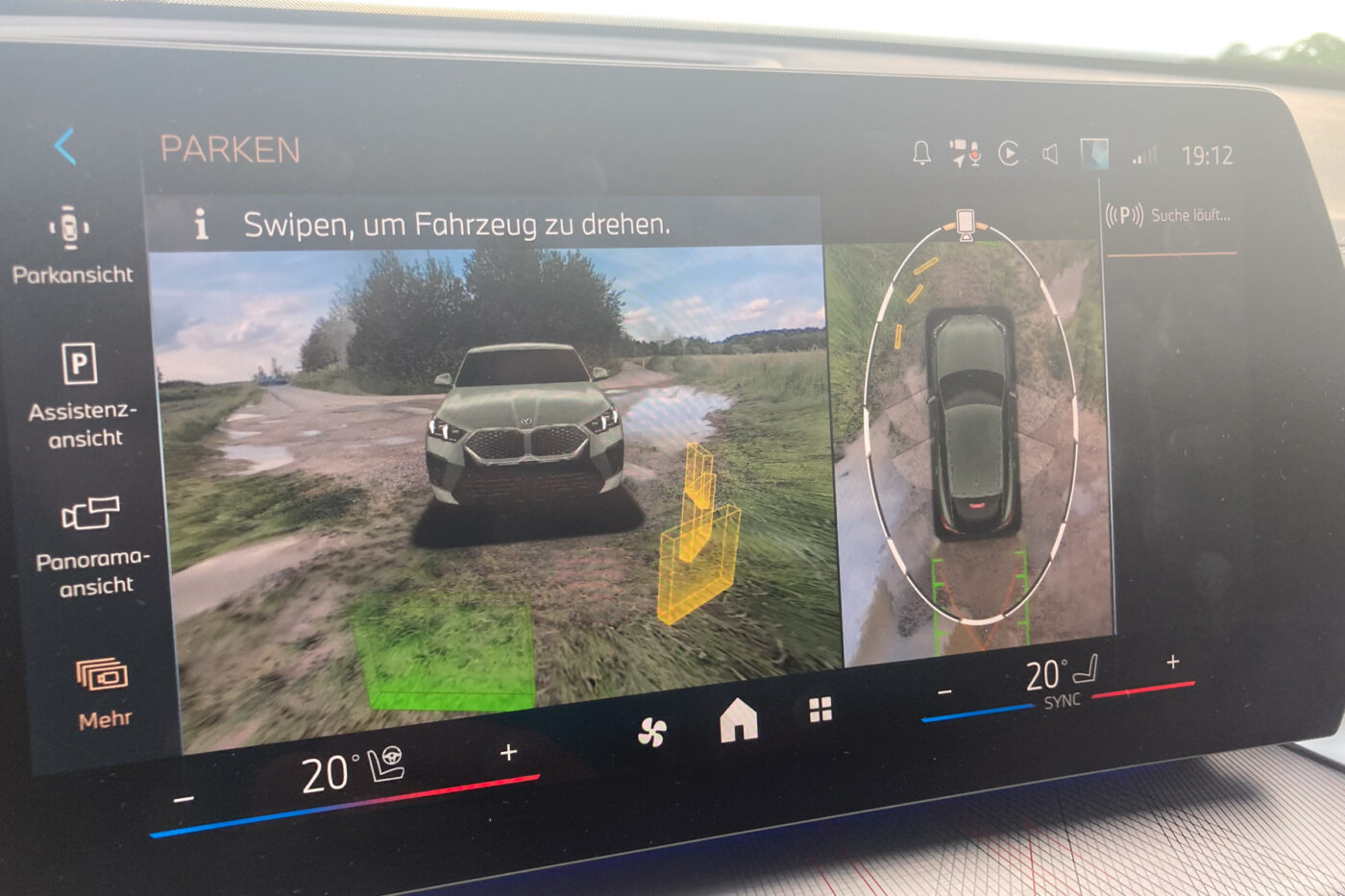
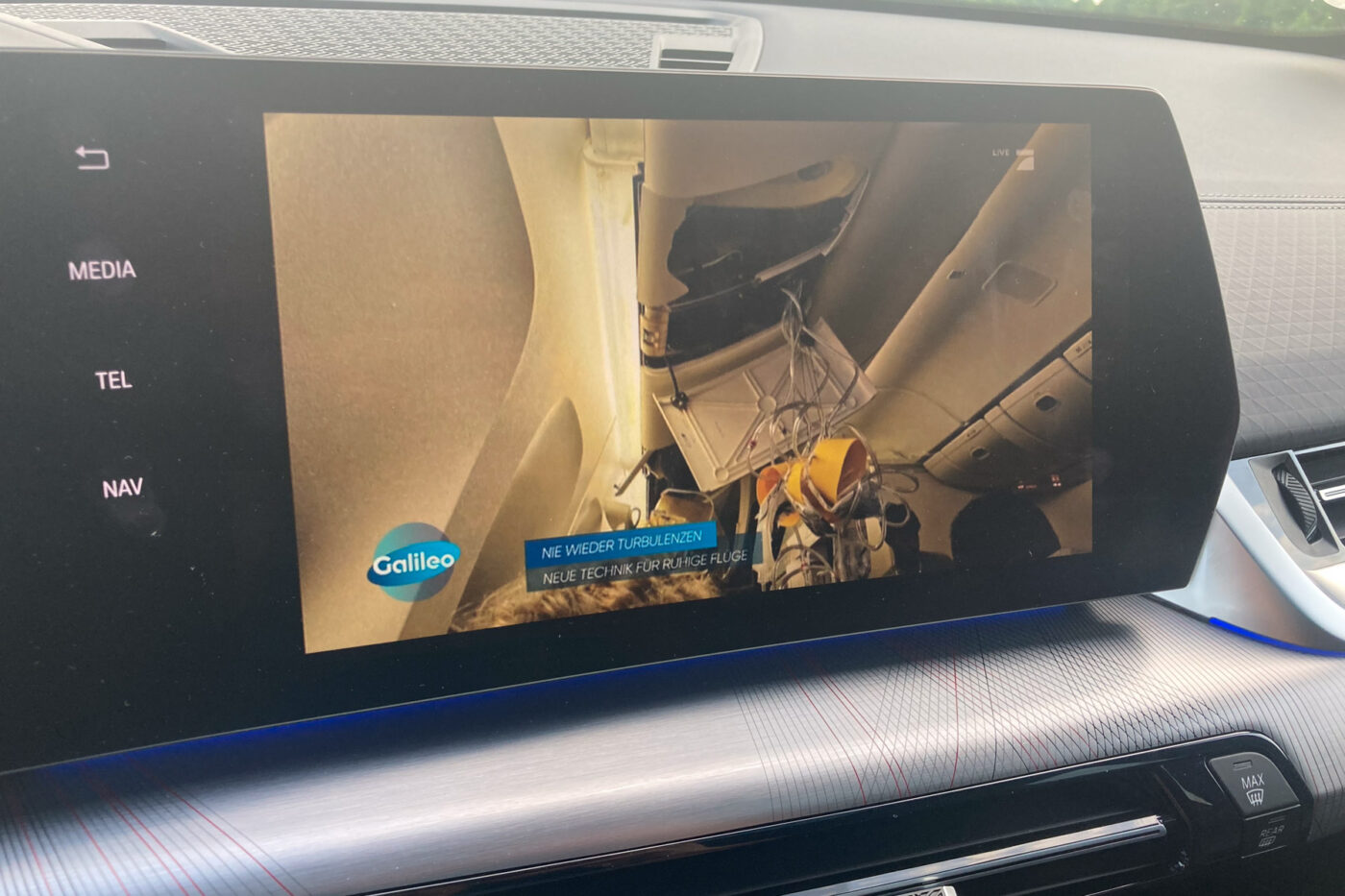
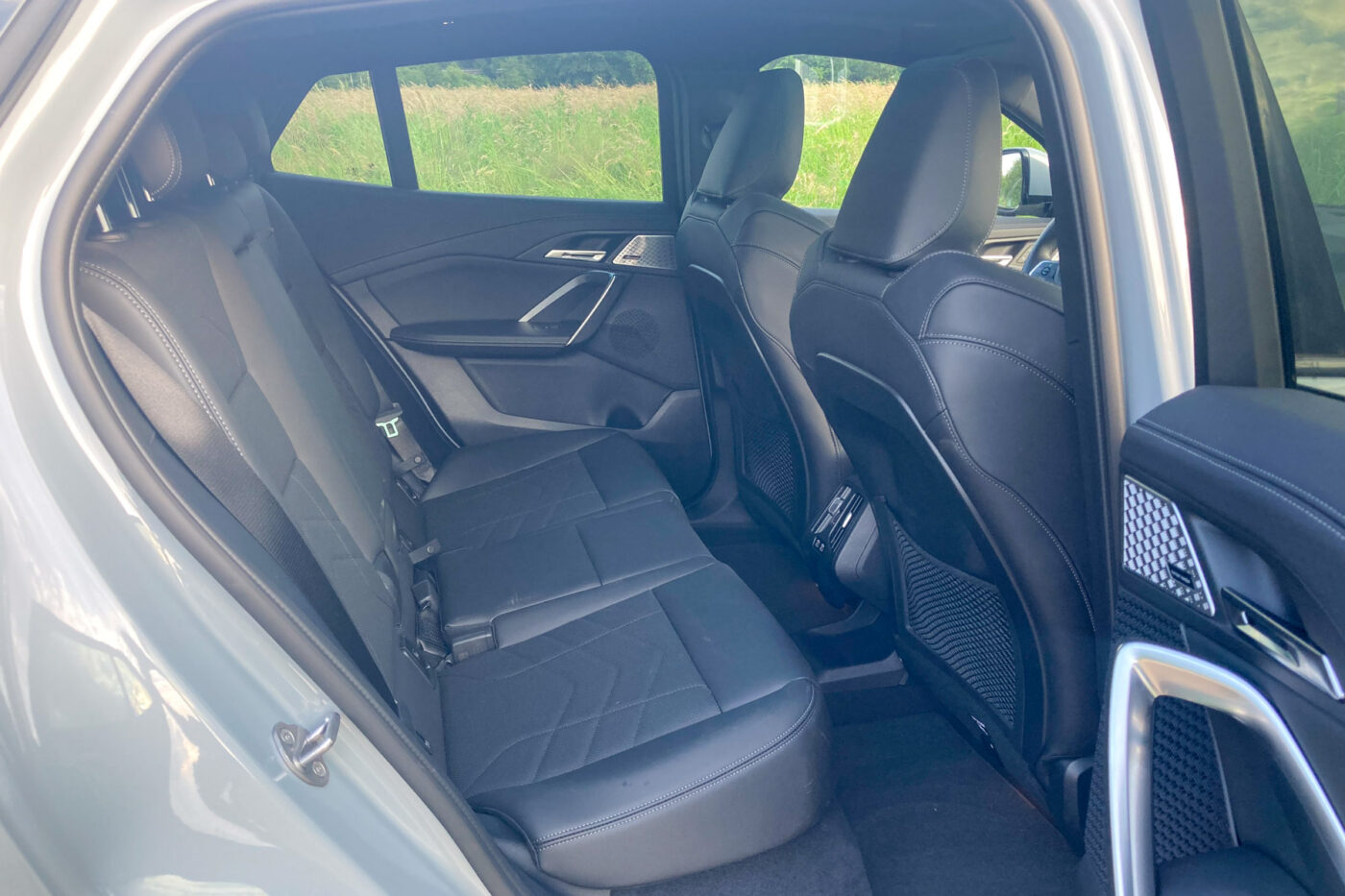
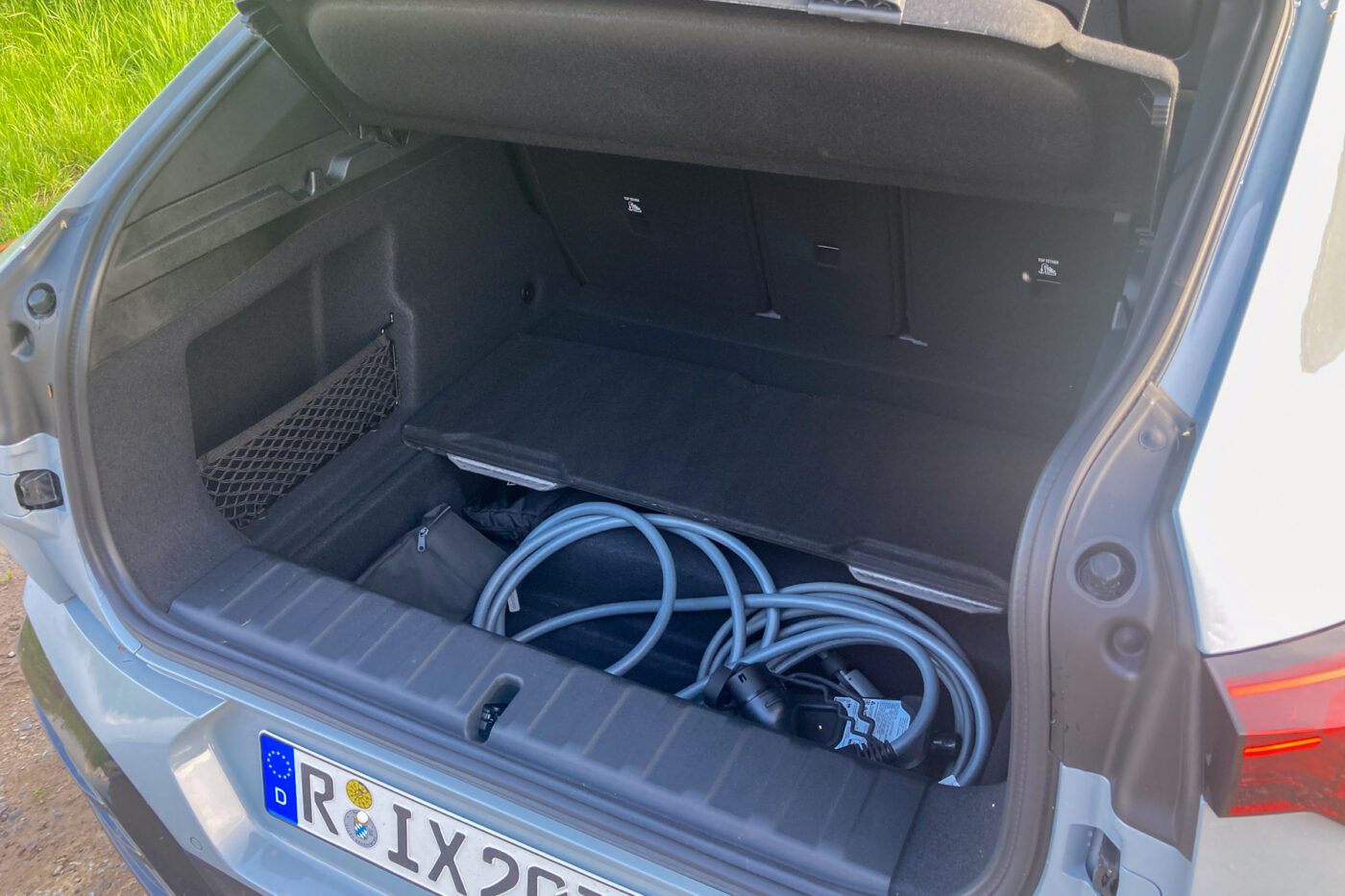

One point of criticism is that there is no frunk for the charging cable, for example. It can either be stowed in a compartment under the boot floor (with poor accessibility if there is luggage in the boot) or it takes up space in the boot or flies around. Neither is ideal, especially in this price range.
Measured in terms of length – the iX2 is a full 20 centimetres shorter than a Model Y – there is plenty of space inside. There are no restrictions at the front, but the rear seat is a little narrower for taller passengers – BMW cannot completely conceal the flatter roofline of the iX2. But that’s what the iX1 is for. The choice of materials and workmanship are good, elements such as the slightly thicker steering wheel rim and the physical steering wheel buttons instead of touch surfaces are very pleasant to touch and use.
Over 17,000 euros in extras in the test car
Nevertheless, the interior of the iX2 is not without its flaws in my eyes. Although I can understand many of BMW’s design decisions, I personally find the surfaces with different patterns and lines too restless – but that is a matter of taste. However, BMW has wasted a lot of space on two points: The inductive charging cradle for the smartphone with a holding bracket is a nice feature, but it takes up the entire width of the centre console. There would actually be enough space to place two smartphones next to each other. However, charging is only possible in the centre. And the free-floating centre consoles have already been abolished in other electric cars. The large storage compartment underneath may look stylish, but it is extremely impractical to reach. A closed centre console with large access from above would significantly increase the utility value.
BMWs are rarely cheap, as we all know. The iX2 with 150 kW front-wheel drive is available from 49,900 euros. Our test car registered in January still has a base price of 56,500 euros, but the iX2 xDrive30 is currently available from a list price of 57,000 euros. That would be a good price in the competitive environment, but BMW also offers numerous optional extras. Paint, wheel rims, assistance systems, M sports package and other features push the price up to an impressive 74,690 euros. It is clear that you can charge more for sports packages, the 22 kW AC Charger or the 20-inch bi-colour rims as individualisation. However, the fact that electrically adjustable front seats (850 euros), heated front seats (350 euros) or a heated steering wheel (190 euros) have to be paid extra in this price range seems out of date.
Conclusion
The iX2 sets the standard in its class when it comes to driving behaviour – other electric cars have to be measured against the BMW here. However, there is room for improvement in terms of range and DC charging power. With its astonishing amount of space and largely sophisticated assistants, the iX2 offers a good, albeit expensive, overall package.

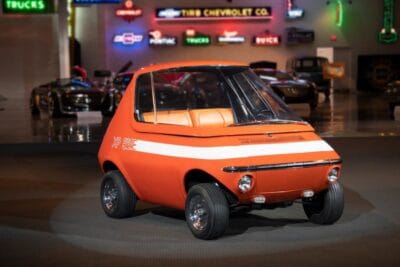
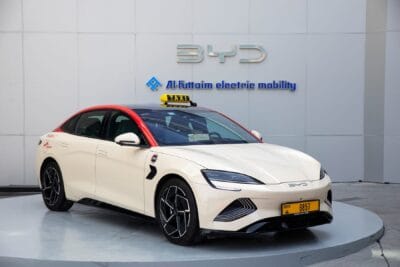
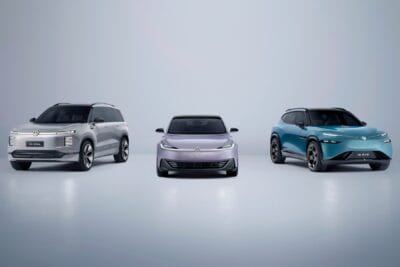
0 Comments